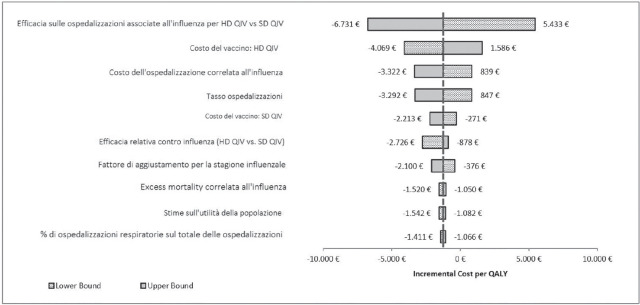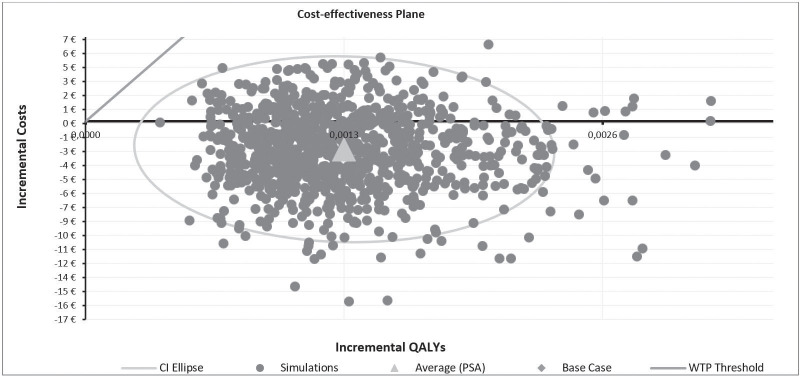高剂量四价流感疫苗在意大利老年人中的成本效益分析和预算影响。
IF 0.4
Q4 HEALTH CARE SCIENCES & SERVICES
引用次数: 1
摘要
本文章由计算机程序翻译,如有差异,请以英文原文为准。



Analisi di costo-efficacia e budget impact per il vaccino antinfluenzale quadrivalente ad alto dosaggio nella popolazione anziana italiana.
Cost-effectiveness and budget impact analysis for high dose quadrivalent influenza vaccine in the Italian elderly population Introduction: Influenza is a widespread acute respiratory disease and represents a serious Public Health problem, both from the NHS and society perspectives. The High Dose quadrivalent influenza vaccine (QIV HD) is a flu vaccine containing 4 times the antigens of a Standard Dose vaccine, resulting in demonstrated superior protection in the population aged 65 years and over. Methods: The analysis has been conducted from the perspective of the NHS. The CEA focuses on the comparison between QIV HD and the QIV SD vaccine. The BIM aims to estimate the potential economic impact for the National Health Service (NHS) resulting from the use of QIV HD in clinical practice in subjects aged 65 or over, when considering its introduction in combination with currently used vaccines, QIV SD and adjuvanted TIV. Results: In a scenario which considers hospitalizations possibly related to influenza, so including cardio-respiratory events, a dominant cost-effectiveness profile emerges in the comparison with QIV SD. In terms of budget impact, overall savings obtained by comparing the two scenarios regarding hospitalizations are equal to 92,766,429 € over the three years’ time horizon considered in the analysis. Conclusions: Nowadays, also considering the state of emergency due to the spread of the SARS-CoV-2 virus, it is crucial to implement innovative health technologies that improve the efficiency and sustainability of the health system. Also, it is essential to protect the elderly population, helping to avoid overload and healthcare systems disruption due to the many COVID-19 hospitalizations.
求助全文
通过发布文献求助,成功后即可免费获取论文全文。
去求助
来源期刊

Global & Regional Health Technology Assessment
HEALTH CARE SCIENCES & SERVICES-
CiteScore
0.80
自引率
20.00%
发文量
27
审稿时长
8 weeks
期刊介绍:
Global & Regional Health Technology Assessment (GRHTA) is a peer-reviewed, open access journal which aims to promote health technology assessment and economic evaluation, enabling choices among alternative therapeutical paths or procedures with different clinical and economic outcomes. GRHTA is a unique journal having three different editorial boards who focus on their respective geographical expertise.
 求助内容:
求助内容: 应助结果提醒方式:
应助结果提醒方式:


